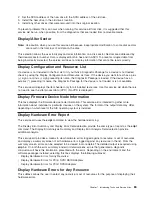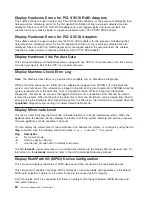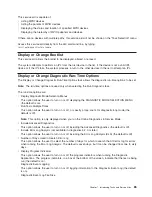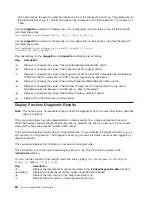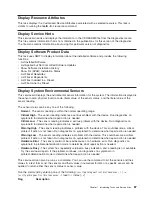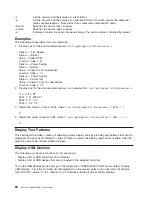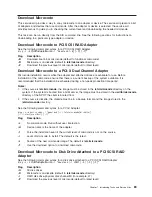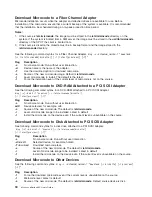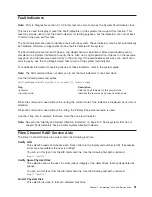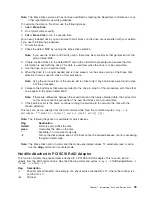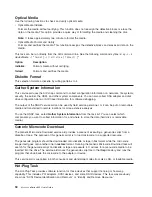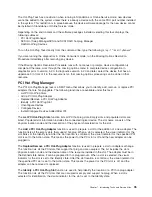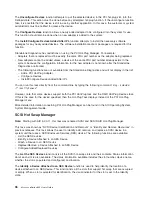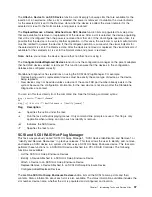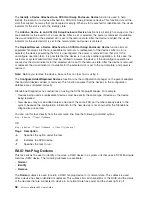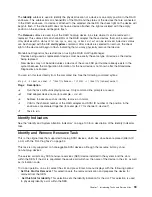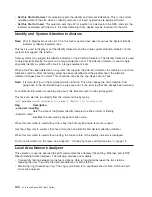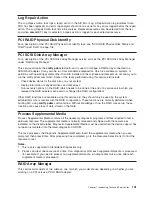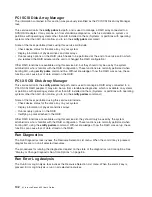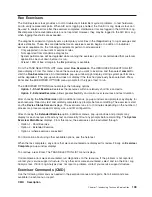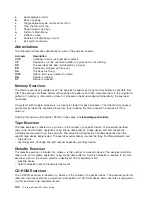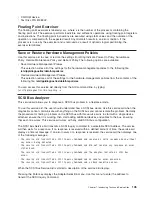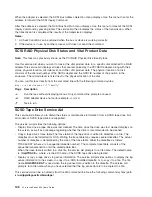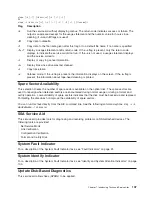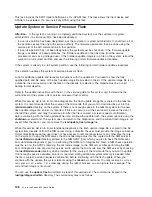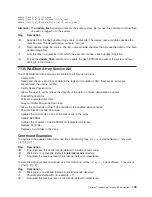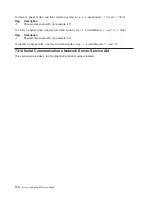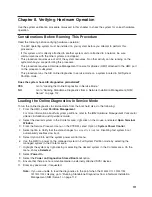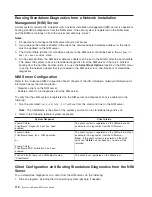
The
Attach
a
Device
to
an
SES
Device
function
lists
all
empty
hot-swap
slots
that
are
available
for
the
insertion
of
a
new
device.
After
a
slot
is
selected,
the
power
is
removed.
If
available,
the
visual
indicator
for
the
selected
slot
is
set
to
the
Remove
state.
After
the
device
is
added,
the
visual
indicator
for
the
selected
slot
is
set
to
the
Normal
state,
and
power
is
restored.
The
Replace/Remove
a
Device
Attached
to
an
SES
Device
function
lists
all
populated
hot-swap
slots
that
are
available
for
removal
or
replacement
of
the
devices.
After
a
slot
is
selected,
the
device
populating
that
slot
is
Unconfigured;
then
the
power
is
removed
from
that
slot.
If
the
Unconfigure
operation
fails,
it
is
possible
that
the
device
is
in
use
by
another
application.
In
this
case,
the
customer
or
system
administrator
must
be
notified
to
quiesce
the
device.
If
the
Unconfigure
operation
is
successful,
the
visual
indicator
for
the
selected
slot
is
set
to
the
Remove
state.
After
the
device
is
removed
or
replaced,
the
visual
indicator,
if
available
for
the
selected
slot,
is
set
to
the
Normal
state,
and
power
is
restored.
Note:
Before
you
remove
the
device,
be
sure
that
no
other
host
is
using
it.
The
Configure
Added/Replaced
Devices
function
runs
the
configuration
manager
on
the
parent
adapters
that
had
child
devices
added
or
removed.
This
function
ensures
that
the
devices
in
the
configuration
database
are
configured
correctly.
Standalone
Diagnostics
has
restrictions
on
using
the
SCSI
Hot-Plug
Manager.
For
example:
v
Devices
being
used
as
replacement
devices
must
be
exactly
the
same
type
of
device
as
the
device
being
replaced.
v
New
devices
may
not
be
added
unless
a
device
of
the
same
FRU
part
number
already
exists
in
the
system,
because
the
configuration
information
for
the
new
device
is
not
known
after
the
Standalone
Diagnostics
are
booted.
You
can
run
this
task
directly
from
the
command
line.
See
the
following
command
syntax:
diag
-d
device
-T"identifyRemove"
OR
diag
[-c]
-d
device
-T"identifyRemove
-a
[identify|remove]"
Flag
Description
-a
Specifies
the
option
under
the
task.
-c
Run
the
task
without
displaying
menus.
Only
command
line
prompts
are
used.
This
flag
is
only
applicable
when
running
an
option
such
as
identify
or
remove.
-d
Indicates
the
SCSI
device.
-T
Specifies
the
task
to
run.
SCSI
and
SCSI
RAID
Hot-Plug
Manager
This
task
was
previously
called
″
SCSI
Hot
Swap
Manager
″
,
″
SCSI
Device
Identification
and
Removal
″
or
″
Identify
and
Remove
Resources
″
in
previous
releases.
This
task
allows
the
user
to
identify,
add,
remove,
and
replace
a
SCSI
device
in
a
system
unit
that
uses
a
SCSI
Hot
Swap
Enclosure
device.
This
task
also
performs
these
functions
on
a
SCSI
RAID
device
attached
to
a
PCI-X
RAID
Controller.
The
following
functions
are
available:
v
List
the
SCSI
Hot
Swap
Enclosure
Devices
v
Identify
a
Device
Attached
to
a
SCSI
Hot
Swap
Enclosure
Device
v
Attach
a
Device
to
an
SCSI
Hot
Swap
Enclosure
Device
v
Replace/Remove
a
Device
Attached
to
an
SCSI
Hot
Swap
Enclosure
Device
v
Configure
Added/Replaced
Devices
The
List
the
SCSI
Hot
Swap
Enclosure
Devices
unction
lists
all
the
SCSI
hot-swap
slots
and
their
contents.
Status
information
about
each
slot
is
also
available.
The
status
information
available
includes
the
slot
number,
device
name,
whether
the
slot
is
populated
and
configured,
and
location.
Chapter
7.
Introducing
Tasks
and
Service
Aids
97
Summary of Contents for p 655 series
Page 1: ...pSeries 655 User s Guide SA38 0617 03 ERserver...
Page 2: ......
Page 3: ...pSeries 655 User s Guide SA38 0617 03 ERserver...
Page 10: ...viii Eserver pSeries 655 User s Guide...
Page 14: ...xii Eserver pSeries 655 User s Guide...
Page 16: ...xiv Eserver pSeries 655 User s Guide...
Page 24: ...6 Eserver pSeries 655 User s Guide...
Page 32: ...14 Eserver pSeries 655 User s Guide...
Page 36: ...18 Eserver pSeries 655 User s Guide...
Page 90: ...72 Eserver pSeries 655 User s Guide...
Page 144: ...126 Eserver pSeries 655 User s Guide...
Page 208: ...190 Eserver pSeries 655 User s Guide...
Page 214: ...196 Eserver pSeries 655 User s Guide...
Page 217: ......

